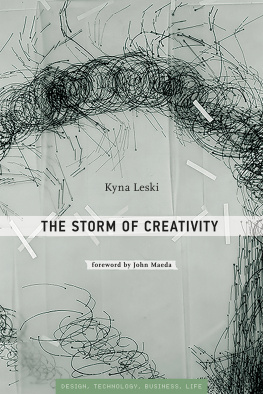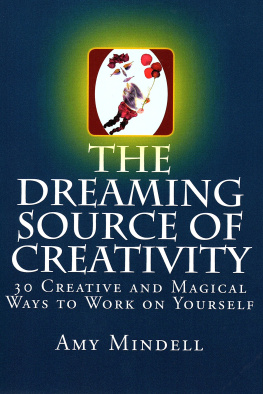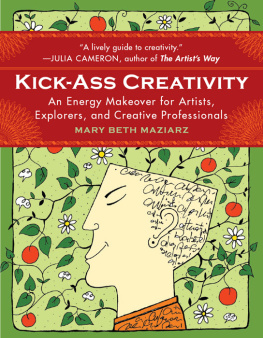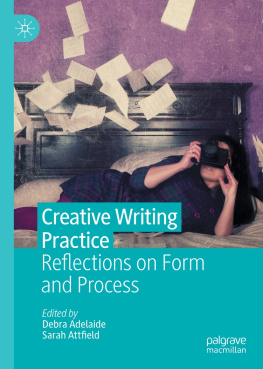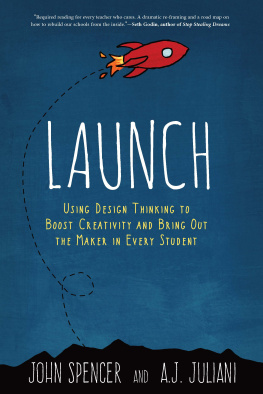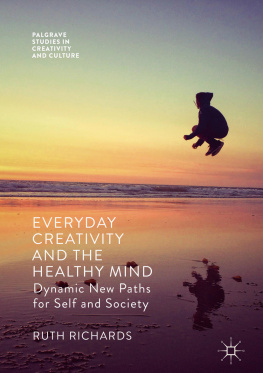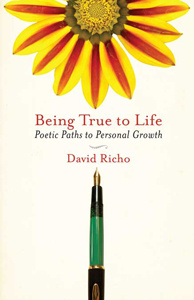Contents
Foreword
John Maeda
I was presented with the opportunity to give a talk about design at an architecture firm in Boston shortly after I was appointed as president of the Rhode Island School of Design (RISD). Kyna Leski was someone I had heard about through an MIT colleague, so I looked her up and invited her to copresent with me. She accepted, and when she did so, I realized I had accepted a kind of risk as I had never met her before.
As a creative person, I am conscious of how I habitually (and still quite uncomfortably) try out new things as the only method by which I truly learn. For the talk, I stepped out of my comfort zone to invite a complete stranger into the occasion; at the same time, I noted how Kyna accepted my offer without hesitation. To me, it indicated that she was a person who was open to experimentation. I liked that quality, and recognized it for its kinship. And when I experienced Kyna presenting to the audience, I could feel something else in me: utter delight.
That feeling of delight from seven years ago has considerably multiplied on reading this work. It reads like she talks; Kyna speaks many dialects of knowledgefrom engineering equations to achieve structural integrity to the perfect rhythm of a poem. Talking to her always reminded me of reading William Cuthbert Faulkner because there was always so much to gain from what she was saying as a barrage of free-flowing information, but I could easily miss how all the parts of what she was sharing were forming a whole. In fact, I once sent Kyna a little sketched portrait of her on a Post-it note depicted as a kind of tornado of ideas.
This book is an elegant deconstruction of the storm within Kynas mindas ten parts that form a whole. Each chapter provides a different perspective on the storm that lies at the center of her pedagogy for the creative mind, with no single perspective mattering more than any other. And although eminently readable as ten consecutive chapters, I can easily imagine randomly opening the book and starting from the page on which you land. It is your job to connect the dots provided across this book, for as Kyna points out in chapter 8, Creativity is making connections or making the existing connections visible.
Since moving to Silicon Valley, I often hear the mantra fail fast as a key tagline of start-up culture. The underlying meaning of course is that its important to iterate quickly when trying to launch a new creative idea. This is not different from what Ive heard professed as an important aspect of learning, whether in my years at RISD or MIT. Even my book The Laws of Simplicity, which started this whole series for the MIT Press, has a chapter (and law) titled Failure. So I find it particularly interesting that Kynas book on creativity may be the only one out there that doesnt have a chapter titled or using the word failure. How can that be?
My guess is that like all good designers, Kyna has isolated the root at the root at the root, or as said in B-school parlance, shes answered the five whys: Why is it X? Because Y. Why is it Y? Because Z.repeated until there can be no more because , and the core idea or issue has been found. Kyna started with and stayed with and ended with the storm, a literal force of nature. Shes given us language to work with at the atomic scale, the atmospheric scale, the human scale, and with a healthy and needed dose of poetry and visual representations. Kyna has answered the question she first asks in chapter 2, I might, as an architect, ask, How is the inside [of the storm] connected to the outside [of the storm]? So be sure to leave your umbrella and galoshes at home, and go explore.
Kleiner Perkins Caufield & Byers
Acknowledgments
I am grateful to the MIT Press for publishing this book, especially executive editor Bob Prior, manuscript editor Deborah Cantor-Adams, and designer Erin Hasley.
Thank you to John Maeda for his laser vision and life support. I am deeply moved and grateful for your words that accompany mine.
I greatly appreciate the work Scott Cooper did alongside me, chopping up my writing and putting it together coherently.
Thank you to Jessie Shefrin, former provost of RISD. Jessie has integrity that is rare and endangered. And great appreciation to Laura Briggs, head of the architecture department at RISD, for her timely offer of support before I asked.
I am grateful to the friends with whom I have had conversations over the years that feed the storm. Thank you to Stuart Blazer, a poet, whose words can be found in chapter 7; the world would be a better place if more people knew his fine work. Thank you to Friedrich St. Florian for his mentorship and friendship. Thank you to Kristin Jones, visual artist, for her inspiring and generous spirit; Thank you to David Gersten, thinker, teacher, architect; and to Richard Saul Wurman, the greatest connector I know. And thank you to Joan Richards, professor of history at Brown University and historian of mathematics, who acted as a spiritual guide in the past year.
I am grateful for the contributions from Frank R. Wilson and Elliot Washor.
Peter Lynch, architect, compared the storm to proto reasoning as we wrote the problem for the RISD core curriculum that came to be known as the Block Problem. That problem and others written for the Making of Design Principles class traveled to other architecture schools worldwide. I am grateful to all the faculty members teaching this class for the contributions they made to its pedagogy.
To my students, I offer appreciation for their sense of purpose, especially those students who have since become my friends and colleagues; Jack Ryan, Olga Mesa, Marcus Shaffer, and Jonsara Ruth, to name a few.
I would like to acknowledge several of my teachers: Rosemarie Pantaleo Sheetz introduced me to rigor and precision in art; Thomas Depelteau taught me to think abstractly through geometry; John Hejduk spoke to my daimon; Robert Slutsky, the intellectual painter; Sue Gussow, who brought embodiment back to architecture after a cold, dry spell; Robin Evans, the architectural historian for architects; Rafael Moneo, architect; and Stephen Jay Gould, who changed my outlook on life.
I would like to acknowledge my father, Tadeusz Marian Leski, gifted architect, who taught me to draw from life as an essential process like breathing, and my mother, Iris Leski, who introduced me to poetry and acting.
Finally I have a debt of gratitude to Chris Bardtarchitect, professor, colleague, partner, husbandfor the quiet hydrologic cycle underlying it all.
Introduction
This book describes the creative processactually many processes that comprise a larger processI have experienced and observed. I have listened to and observed these many processes as a teacher, student, maker, writer, and architect myself. I do not suggest these processes can be followed as a recipe for being creative. I simply want to describe what I have observed, try to convince you of its universality, and encourage you to recognize these processes in your own practice.
The many processes are really stages of an overall process one navigates in knowing, making, or discovering something that does not yet exist. These stages are not really something one can schedule or impose externally; rather, they are stages one experiences internally. And even though a stage may quietly commence internally for the creator of a work, it can be empowering or debilitating. Simply put, the creative process is bigger than you. It is like a storm that slowly begins to gather and take form until it overtakes youif you are willing to let it.
That doesnt mean you dont have a critical role to play. On the contrary, like a little eddy that can trigger a hurricane, each individual causes a disruption that kicks into motion a purpose that gathers and sheds material and thoughts each day through expressions and choices made.
Next page
